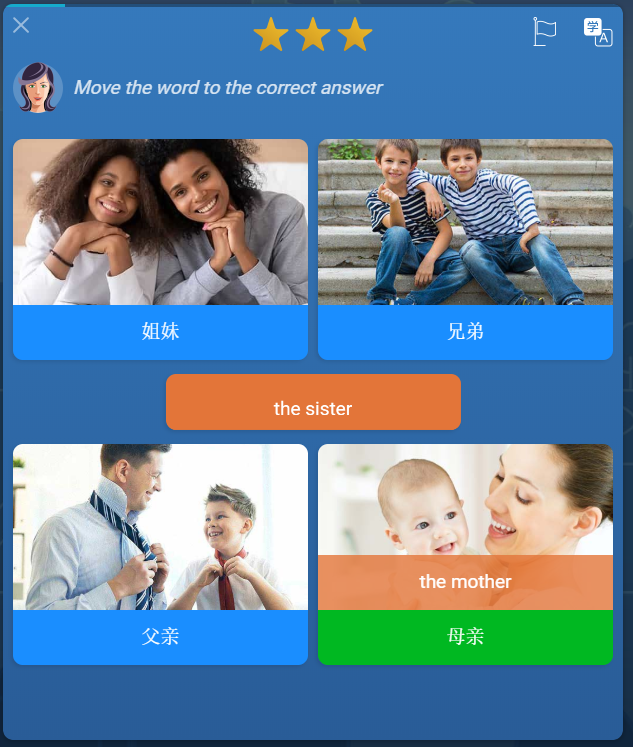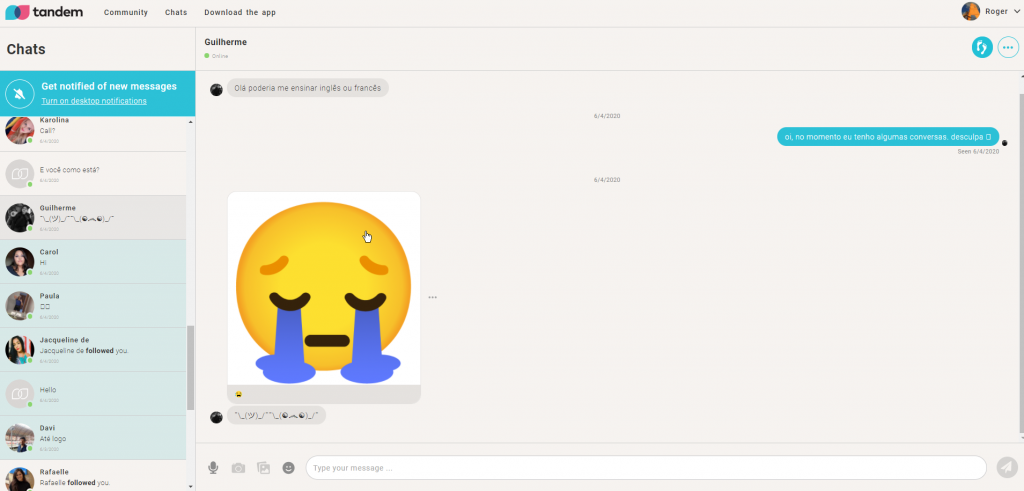Esperanto on Duolingo
As it appeared that my last lesson from yesterday was gone, or actually not saved cause the dishwasher started to spit out foam, I felt bad that I had to redo it. But with didactics in mind, I now embrace the possibility to recap it [insert vomit emoji here]. So I copied some of Day 1’s posted sentences on here again. In order to add yet another writing exercise, I rewrite both the sentence in Esperanto as well as English in this post. This time, I’ll also leave director’s comments below with my impression about the languages I’m learning.
Jen la mapo de Kandao. = Here is the map of Canada.
Multaj Usoanoj loĝas en Germanio. = Many Americans live in Germany.
Kiu kontinento estas pli granda ol Eŭropo? = Which continent is larger than Europe?
Kiu kontinento estast pli granda ol Europo?
Mi vojaĝas al Aŭstralio por viziti miajn gepatrojn. = I travel to Australia to visit my grandparents.
Iberian parents
Observing the prefix ge- in last example sentence, I thought it would add something to parents, so the first thing I thought of was grand. But romantic (or Romance) as I am, I guess my reasoning that patro means father doesn’t make the pluralized patroj parents yet. That may apply to the following where alpha and high-level beta meet in the following daddy plus mommy makes parents equations:
| Spanish | el padre | la madre | los padres |
| Portuguese | o pai | a mãe | os pais |
| Galician | o pai | a nai | os pais |
| Catalan | el pare | la mare | els pares |
| North of the Pyrenees | |||
| Occitan | lo paire | la maire | los parents |
| French | le père | la mère | les parents |
| Italian | il padre | la madre | i genitori |
| Romanian | mamă | tată | părinţi |
| PC emojis on PC etc |  |  |  |
| English | the father | the mother | the parents |
Conclusion: Pyrenees crossing North makes you a little less patriarchal (at least when looking at those words)!
Duolingo courses
This is an overview of the target languages Duolingo offers from instruction language English. The marked  ones are the ones I’m taking. I’m also following Catalan through Spanish and prefer to learn (Brazilian) Portuguese with the same Iberic neighbouring perspective to see the resemblances and differences.
ones are the ones I’m taking. I’m also following Catalan through Spanish and prefer to learn (Brazilian) Portuguese with the same Iberic neighbouring perspective to see the resemblances and differences.
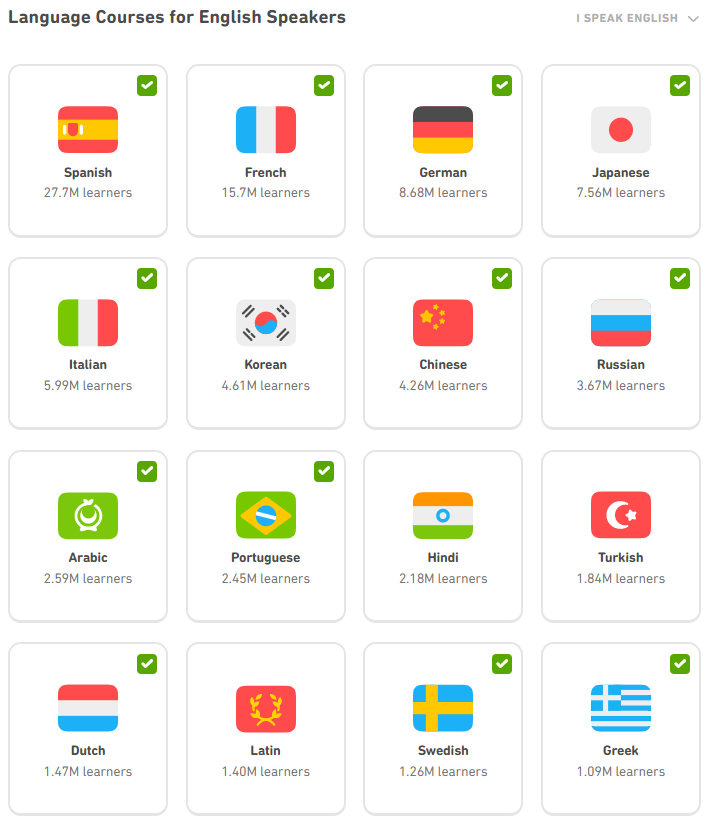
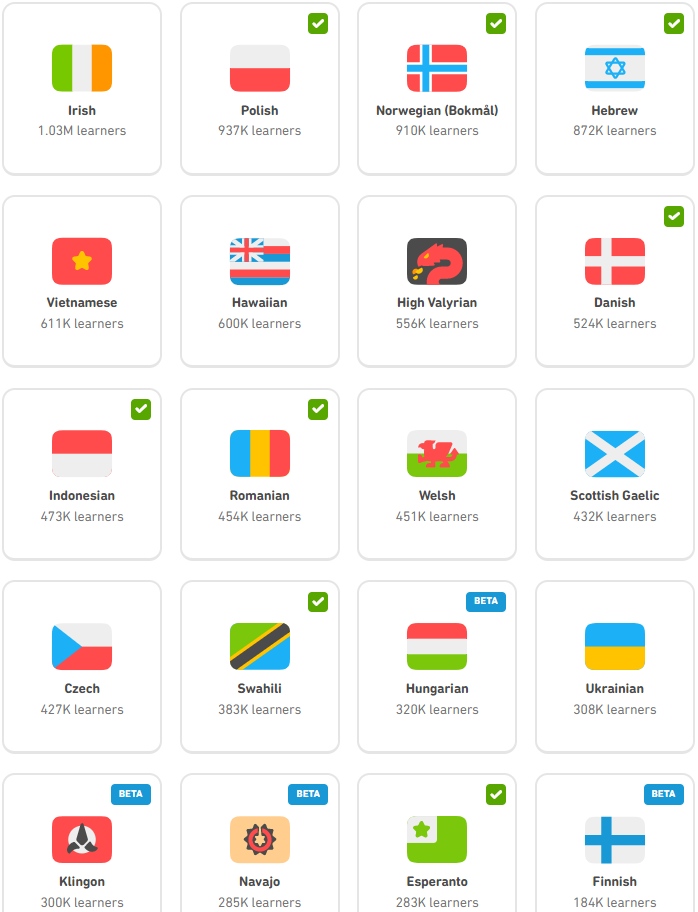
Even though I believe Duolingo is pretty good at integrating gamification and makes me want to complete all wizard levels cause I added an image, become a new gemstone I never even heard of in my native Dutch and follow someone from the other side of the world who’s nearly outowling me in Klingon, I will switch to other apps to keep my comparing looks on self-study apps and platforms as fresh as a sprouting spring upon the hills.
Chinese on Mondly
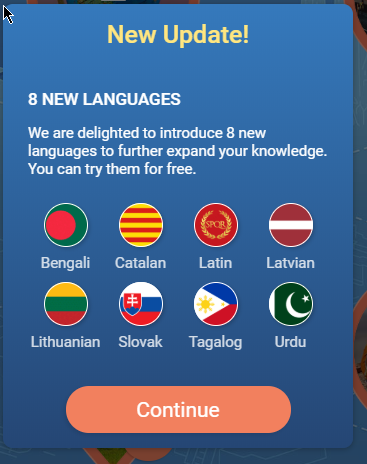
I used Mondly before for other languages, such as Hebrew and Japanese, which I also reviewed.
Mondly now offers 8 new languages: Bengali, Catalan, Latin, Latvian, Lithuanian, Slovak, Tagalog and Urdu. Probably feeding Covid-19 conspirators, it announced the inclusion to its now 41 languages to the Mondly family in February 2020. What a welcoming news for those bored linguofiles in quarantine. More details on this Mondly page.
At first I thought I could no longer fly a new Mondly balloon lesson as I kept hearing the Mario coin level sound each time I clicked a new lesson for Chinese. But it appears that I just have to follow the intended lesson structure.
When using different apps, platforms and methods for the same language, you can’t avoid repeating known language. As mentioned earlier, that actually helps you memorize better and feel more certain. Besides, it might give you another approach of the new language as well as learn a few new words, that you thought you knew already.
As always, Mondly starts any beginner lesson with these kinship terms, in all languages that I tried at least.
It may be confusing that Duolingo and Mondly both use different terms for the same family terms. But in reality, they both have a different formality (dad(dy)/mom(my) vs. father/mother) and age (younger and older brother/sister). And kinship terms don’t always have a one-on-one equivalent in different languages, and especially in different language families.

I can also recommend any autodidact to perceive any such language learning app, platform – or any method for that matter – as useful in some way. Though given language can sometimes confuse you at some point, just realize that not one language method can be complete, especially not at beginner level. That means that for those who detect a critical view and perfectionist behaviour within themselves when approaching a new language (course), my advise would be to use it as a useful tool to give you a better understanding of the language, not a complete overview. And since language learning nowadays is not really dependent on what a monk teaches you, just perform a quick search online. It doesn’t only give you a broader scope on things, but also a more independent and therefore self-certain feeling perhaps. Speaking of self-awareness, I’m going to change languages and learning method again, because Margret and Zwanovski here have so out-ballooned me after this Chinese on Mondly lesson here that it doesn’t really encourage me to compete with such frequent Mondliers.
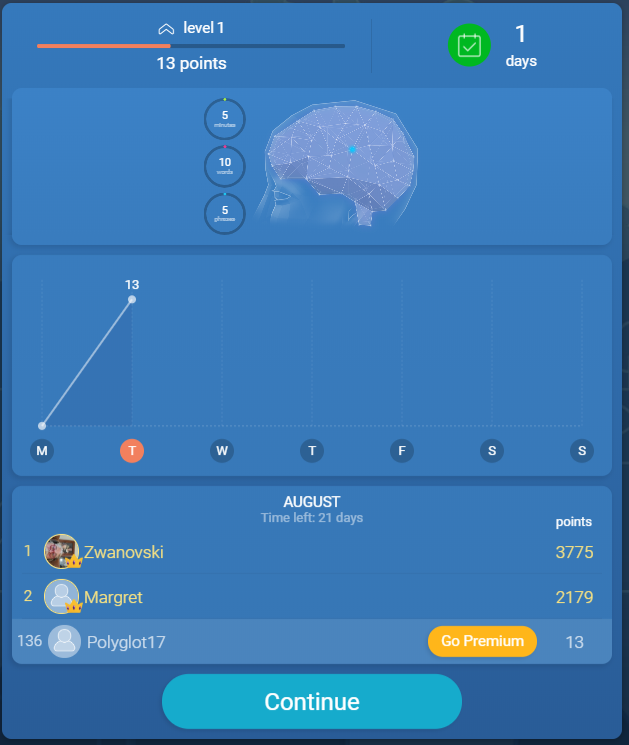
Learning Portuguese (or any language) listening to radio.garden
While writing this post -except when listening to the Esperanto and Chinese audio of course- I’m listening to radio stations from Spain and Portugal on radio.garden. Interviews, songs and news bulletins are amusing to listen to while practicing my listening skills during work. I now happen to have selected Spanish and Portuguese stations, because of my little Iberian Immersion, but you can easily jump to any place on on the world map and listen to connected stations in your target language, from any country that you can’t physically be in now due to Covid-19, travel budget, flygskam or work and family matters. Speaking of flygskam, I’m going to learn some Swedish!
Learning intermediate Swedish with a Babbel lesson
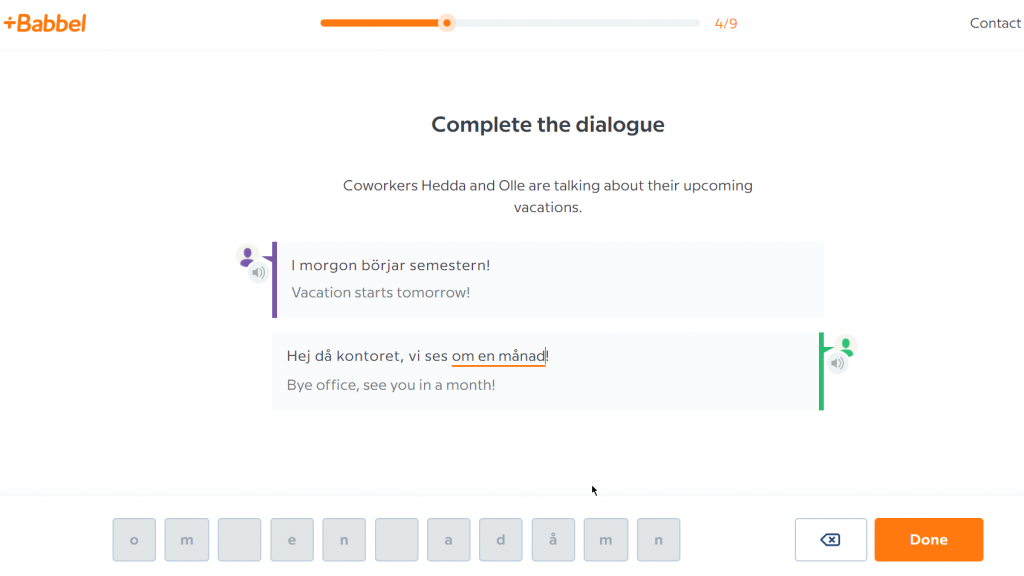
This first lesson from the intermediary course (you can select this level yourself) starts with an introduction of some words of time, before you are asked to fill in the blanks of a typical convo, which I think is very useful.
Just as useful are the grammar lessons after the dialogue of the lesson, the former as an essential though not boring explanation, the latter as a founding body of the lesson:

And like Duolingo, Mondly and most language learning apps, Mondly also finishes with some words of appraisal. Even though I think I made more than one mistake, especially those that were counted as typos. In reality were my errors choosing the other preposition from what that specific lesson was about, but well. I did learn from that lesson and I was made aware of my mistakes -ideally I’d be able to enter the correct version afterwards myself but well, c’est ça- ou la la, voici, polyglot. 😂 Anyway, I think that positiveness does want me to continue.
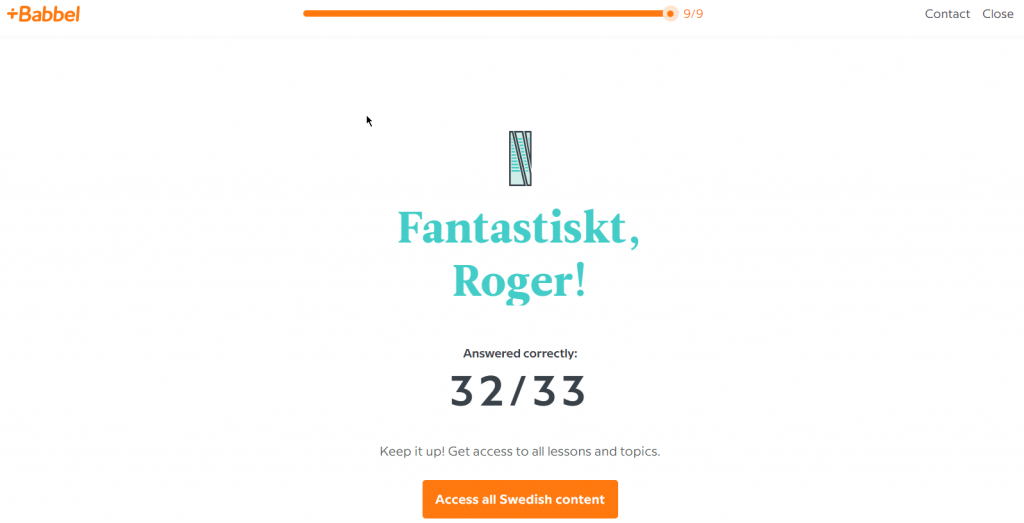
Deciphering my first Chinese message on Tandem
I just found dozens of messages in my inbox on Tandem, a worldwide community of language learners who help each other by offering their native (and other high-level) languages while practicing their own target language(s) and yes, for free. One should always realize with any language exchange (often referred to as tandem) partner that your free exercise is paid for by additional time for the other person. So in a one-on-one exchange I could speak one hour of my target language Portuguese and after I should ‘teach’ or at least dedicate another hour of my native Dutch or fluent English to my tandem partner. On Tandem.net it’s not that transactional. And though you’d be a good community member contributing with your own time, any user can hit up any other user based on the languages you can/want to speak.
the language learning app where millions of people teach each other.
Tandem described by Tandem
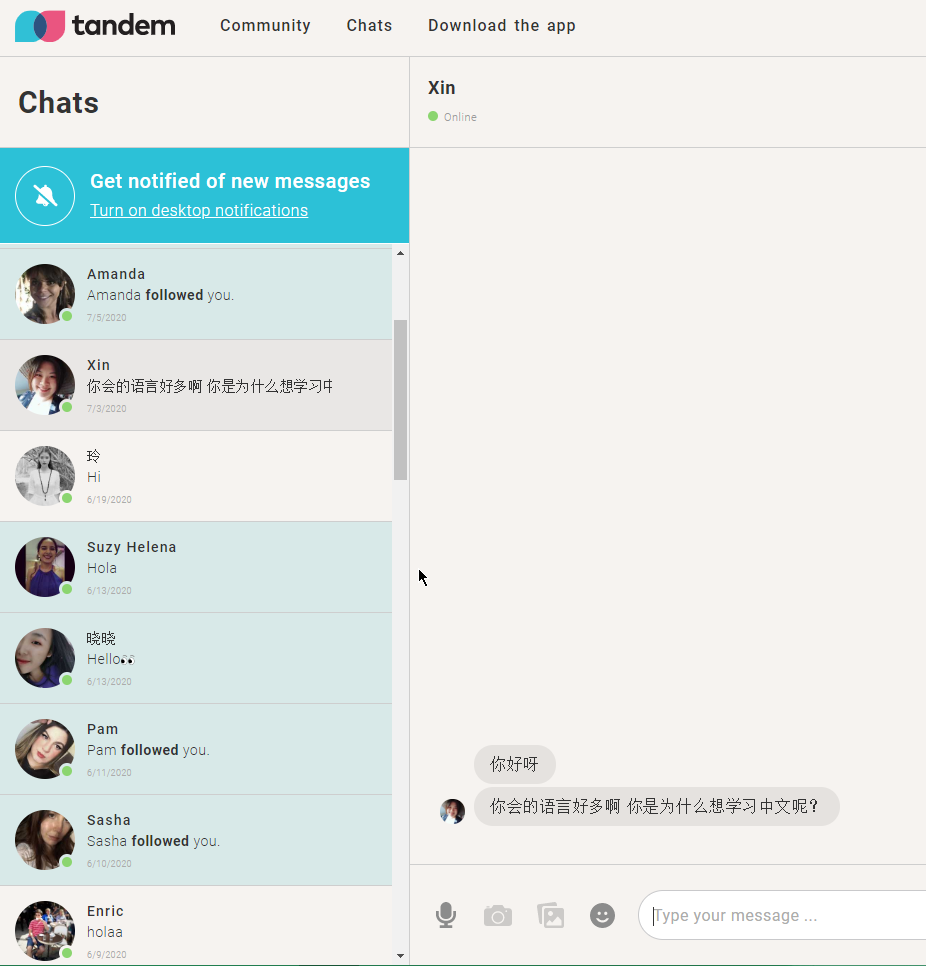
I got this feeling that my lengthy nights with the little green owl being my only companion finally started to pay off. Apart from four awkward attempts in Chinese shops and restaurants in Spain, pretending that my Duolingo efforts would enable me to apply Mandarin as a lingua franca in order to greet, thank and ask the lady behind the counter if she was Chinese and that I am Dutch, I had never brought theory into practice. And here I found two lines of characters in my inbox from a real person. Probably someone who wants to help me. Who understands the difficulty of being a language learner. Who knows how vulnerable I became as I added Chinese as learning language on my Tandem profile. And here I found her initial message: 你好呀. 你会的语言好多啊 你是为什么想学习中文呢?Yes, my first thought was if Tandem has an auto-translate button somewhere, like Hello Talk has. Ah, wait, Hello Talk, so I did have a chat in Chinese before. Alright, well, forget about Google Translate and what more, I’m going to see which characters I know for sure, which I recognize and then try to guess the general context. Well, I’ll take you along in my per-character deciphering experience, to show which hopefully encourages you to dive into the same (or another) deep yourself. I was happy to be sure about the first two already!
你好 = Hello (so far, so good. and understood for a 100%!) What’s that third character? 呀 OK, maybe I just understood that first sentence for 66.66%. If that would be the case when following a debate with President Xi (if there were any at all), I’d be extremely proud if that would be my rate of understanding. OK, I guess I don’t need to understand her full greeting at this point. I do recognize the mouth radical in that third character, but that could be a phonetic indication rather than signifying something semantic. 好 (Good), let’s move on!
你会的语言好多啊 你是为什么想学习中文呢?I’ve learned most characters and I think that line can be split up in two parts. I think the second part 你是为什么想学习中文呢 is her asking me why I would like to learn Chinese.
The first part你会的语言好多啊 I’d guess -but again, this is based on static Duolingo sentences mostly- either means that I speak the language very well or is part of her longer question asking me if I can speak the language. At this stage, only you and I know that I hardly speak Chinese. And whether I’d tell her that in correct Chinese phrasing or not, either way she’ll understand that I don’t. 好! Now that that’s solved, I allow myself to check the actual meaning on Google Translate. While philosophizing about this, I hope my sender has found a recipient who doesn’t need to blog about it and replies within a shorter period than five months, poor girl.

Ah yeah, stupid me. Of course she referred to languages, in general: Hello. You can speak many languages. But I was right about the second part! Woohoo! Now I’m going to have to be honest with her that I don’t really speak Chinese (yet), without losing this great opportunity to actually try writing a sentence to a real person! And I guess that’s how I’d like to encourage any language learner: see and present yourself as someone who speaks the language a little bit, even if it’s just one sentence. That will help you cross one of the biggest hurdles: the fear of speaking! So I’m going to change my keyboard settings to Mandarin input and try to reply to her.
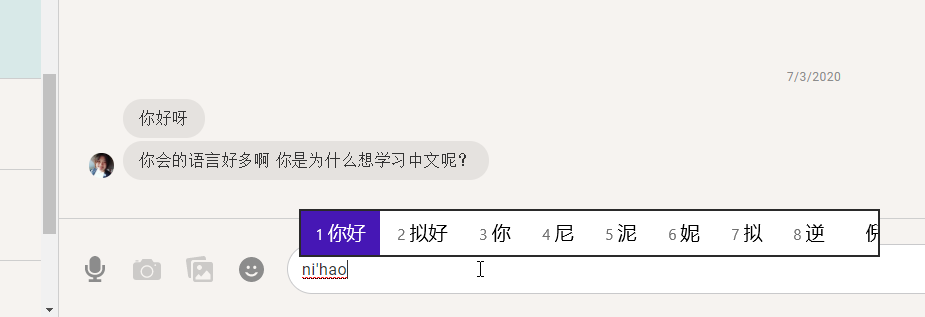
Exciting! So of course I checked my sentence in Google Translate; we wouldn’t want to insult anyone. I said I like to learn Chinese on Duolingo whereas I intended to say I learn Chinese on Duolingo. But I decided to leave my mistake as it was and send it, cause otherwise she’d get a better impression about my Chinese than it actually is and then you’ll see that the next thing that she’ll expect me to do is discuss political differences between the Ming dynasty and the following. Besides, Tandem does have a built-in functionality to correct your partner’s sentences! If she takes a little less time to reply than me, I’ll keep you posted while I’m going to answer some other messages on Tandem! This next and last screenshot for today shows the drama I have caused by telling a new sender that I didn’t have time due to many messages and I wasn’t able to answer his at that moment. So bear in mind that you can’t please everyone. 🐻
